RBS 2012 Annual Report Download - page 288
Download and view the complete annual report
Please find page 288 of the 2012 RBS annual report below. You can navigate through the pages in the report by either clicking on the pages listed below, or by using the keyword search tool below to find specific information within the annual report.-
 1
1 -
 2
2 -
 3
3 -
 4
4 -
 5
5 -
 6
6 -
 7
7 -
 8
8 -
 9
9 -
 10
10 -
 11
11 -
 12
12 -
 13
13 -
 14
14 -
 15
15 -
 16
16 -
 17
17 -
 18
18 -
 19
19 -
 20
20 -
 21
21 -
 22
22 -
 23
23 -
 24
24 -
 25
25 -
 26
26 -
 27
27 -
 28
28 -
 29
29 -
 30
30 -
 31
31 -
 32
32 -
 33
33 -
 34
34 -
 35
35 -
 36
36 -
 37
37 -
 38
38 -
 39
39 -
 40
40 -
 41
41 -
 42
42 -
 43
43 -
 44
44 -
 45
45 -
 46
46 -
 47
47 -
 48
48 -
 49
49 -
 50
50 -
 51
51 -
 52
52 -
 53
53 -
 54
54 -
 55
55 -
 56
56 -
 57
57 -
 58
58 -
 59
59 -
 60
60 -
 61
61 -
 62
62 -
 63
63 -
 64
64 -
 65
65 -
 66
66 -
 67
67 -
 68
68 -
 69
69 -
 70
70 -
 71
71 -
 72
72 -
 73
73 -
 74
74 -
 75
75 -
 76
76 -
 77
77 -
 78
78 -
 79
79 -
 80
80 -
 81
81 -
 82
82 -
 83
83 -
 84
84 -
 85
85 -
 86
86 -
 87
87 -
 88
88 -
 89
89 -
 90
90 -
 91
91 -
 92
92 -
 93
93 -
 94
94 -
 95
95 -
 96
96 -
 97
97 -
 98
98 -
 99
99 -
 100
100 -
 101
101 -
 102
102 -
 103
103 -
 104
104 -
 105
105 -
 106
106 -
 107
107 -
 108
108 -
 109
109 -
 110
110 -
 111
111 -
 112
112 -
 113
113 -
 114
114 -
 115
115 -
 116
116 -
 117
117 -
 118
118 -
 119
119 -
 120
120 -
 121
121 -
 122
122 -
 123
123 -
 124
124 -
 125
125 -
 126
126 -
 127
127 -
 128
128 -
 129
129 -
 130
130 -
 131
131 -
 132
132 -
 133
133 -
 134
134 -
 135
135 -
 136
136 -
 137
137 -
 138
138 -
 139
139 -
 140
140 -
 141
141 -
 142
142 -
 143
143 -
 144
144 -
 145
145 -
 146
146 -
 147
147 -
 148
148 -
 149
149 -
 150
150 -
 151
151 -
 152
152 -
 153
153 -
 154
154 -
 155
155 -
 156
156 -
 157
157 -
 158
158 -
 159
159 -
 160
160 -
 161
161 -
 162
162 -
 163
163 -
 164
164 -
 165
165 -
 166
166 -
 167
167 -
 168
168 -
 169
169 -
 170
170 -
 171
171 -
 172
172 -
 173
173 -
 174
174 -
 175
175 -
 176
176 -
 177
177 -
 178
178 -
 179
179 -
 180
180 -
 181
181 -
 182
182 -
 183
183 -
 184
184 -
 185
185 -
 186
186 -
 187
187 -
 188
188 -
 189
189 -
 190
190 -
 191
191 -
 192
192 -
 193
193 -
 194
194 -
 195
195 -
 196
196 -
 197
197 -
 198
198 -
 199
199 -
 200
200 -
 201
201 -
 202
202 -
 203
203 -
 204
204 -
 205
205 -
 206
206 -
 207
207 -
 208
208 -
 209
209 -
 210
210 -
 211
211 -
 212
212 -
 213
213 -
 214
214 -
 215
215 -
 216
216 -
 217
217 -
 218
218 -
 219
219 -
 220
220 -
 221
221 -
 222
222 -
 223
223 -
 224
224 -
 225
225 -
 226
226 -
 227
227 -
 228
228 -
 229
229 -
 230
230 -
 231
231 -
 232
232 -
 233
233 -
 234
234 -
 235
235 -
 236
236 -
 237
237 -
 238
238 -
 239
239 -
 240
240 -
 241
241 -
 242
242 -
 243
243 -
 244
244 -
 245
245 -
 246
246 -
 247
247 -
 248
248 -
 249
249 -
 250
250 -
 251
251 -
 252
252 -
 253
253 -
 254
254 -
 255
255 -
 256
256 -
 257
257 -
 258
258 -
 259
259 -
 260
260 -
 261
261 -
 262
262 -
 263
263 -
 264
264 -
 265
265 -
 266
266 -
 267
267 -
 268
268 -
 269
269 -
 270
270 -
 271
271 -
 272
272 -
 273
273 -
 274
274 -
 275
275 -
 276
276 -
 277
277 -
 278
278 -
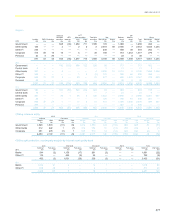 279
279 -
 280
280 -
 281
281 -
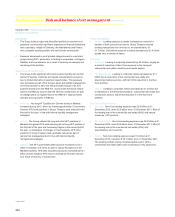 282
282 -
 283
283 -
 284
284 -
 285
285 -
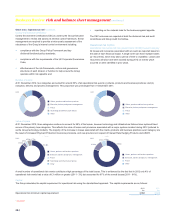 286
286 -
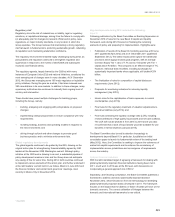 287
287 -
 288
288 -
 289
289 -
 290
290 -
 291
291 -
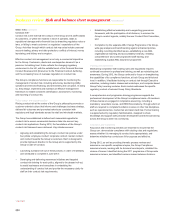 292
292 -
 293
293 -
 294
294 -
 295
295 -
 296
296 -
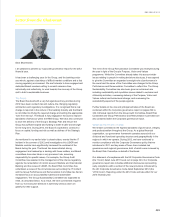 297
297 -
 298
298 -
 299
299 -
 300
300 -
 301
301 -
 302
302 -
 303
303 -
 304
304 -
 305
305 -
 306
306 -
 307
307 -
 308
308 -
 309
309 -
 310
310 -
 311
311 -
 312
312 -
 313
313 -
 314
314 -
 315
315 -
 316
316 -
 317
317 -
 318
318 -
 319
319 -
 320
320 -
 321
321 -
 322
322 -
 323
323 -
 324
324 -
 325
325 -
 326
326 -
 327
327 -
 328
328 -
 329
329 -
 330
330 -
 331
331 -
 332
332 -
 333
333 -
 334
334 -
 335
335 -
 336
336 -
 337
337 -
 338
338 -
 339
339 -
 340
340 -
 341
341 -
 342
342 -
 343
343 -
 344
344 -
 345
345 -
 346
346 -
 347
347 -
 348
348 -
 349
349 -
 350
350 -
 351
351 -
 352
352 -
 353
353 -
 354
354 -
 355
355 -
 356
356 -
 357
357 -
 358
358 -
 359
359 -
 360
360 -
 361
361 -
 362
362 -
 363
363 -
 364
364 -
 365
365 -
 366
366 -
 367
367 -
 368
368 -
 369
369 -
 370
370 -
 371
371 -
 372
372 -
 373
373 -
 374
374 -
 375
375 -
 376
376 -
 377
377 -
 378
378 -
 379
379 -
 380
380 -
 381
381 -
 382
382 -
 383
383 -
 384
384 -
 385
385 -
 386
386 -
 387
387 -
 388
388 -
 389
389 -
 390
390 -
 391
391 -
 392
392 -
 393
393 -
 394
394 -
 395
395 -
 396
396 -
 397
397 -
 398
398 -
 399
399 -
 400
400 -
 401
401 -
 402
402 -
 403
403 -
 404
404 -
 405
405 -
 406
406 -
 407
407 -
 408
408 -
 409
409 -
 410
410 -
 411
411 -
 412
412 -
 413
413 -
 414
414 -
 415
415 -
 416
416 -
 417
417 -
 418
418 -
 419
419 -
 420
420 -
 421
421 -
 422
422 -
 423
423 -
 424
424 -
 425
425 -
 426
426 -
 427
427 -
 428
428 -
 429
429 -
 430
430 -
 431
431 -
 432
432 -
 433
433 -
 434
434 -
 435
435 -
 436
436 -
 437
437 -
 438
438 -
 439
439 -
 440
440 -
 441
441 -
 442
442 -
 443
443 -
 444
444 -
 445
445 -
 446
446 -
 447
447 -
 448
448 -
 449
449 -
 450
450 -
 451
451 -
 452
452 -
 453
453 -
 454
454 -
 455
455 -
 456
456 -
 457
457 -
 458
458 -
 459
459 -
 460
460 -
 461
461 -
 462
462 -
 463
463 -
 464
464 -
 465
465 -
 466
466 -
 467
467 -
 468
468 -
 469
469 -
 470
470 -
 471
471 -
 472
472 -
 473
473 -
 474
474 -
 475
475 -
 476
476 -
 477
477 -
 478
478 -
 479
479 -
 480
480 -
 481
481 -
 482
482 -
 483
483 -
 484
484 -
 485
485 -
 486
486 -
 487
487 -
 488
488 -
 489
489 -
 490
490 -
 491
491 -
 492
492 -
 493
493 -
 494
494 -
 495
495 -
 496
496 -
 497
497 -
 498
498 -
 499
499 -
 500
500 -
 501
501 -
 502
502 -
 503
503 -
 504
504 -
 505
505 -
 506
506 -
 507
507 -
 508
508 -
 509
509 -
 510
510 -
 511
511 -
 512
512 -
 513
513 -
 514
514 -
 515
515 -
 516
516 -
 517
517 -
 518
518 -
 519
519 -
 520
520 -
 521
521 -
 522
522 -
 523
523 -
 524
524 -
 525
525 -
 526
526 -
 527
527 -
 528
528 -
 529
529 -
 530
530 -
 531
531 -
 532
532 -
 533
533 -
 534
534 -
 535
535 -
 536
536 -
 537
537 -
 538
538 -
 539
539 -
 540
540 -
 541
541 -
 542
542 -
 543
543
 |
 |

286
Business review Risk and balance sheet management continued
Other risks: Regulatory risk* continued
Shadow banking
Work in this area, which broadly refers to entities and financial
transactions that fall outside the scope of existing financial (banking)
regulation, such as hedge funds, money market funds and structured
investment vehicles, intensified during 2012.
Globally, Financial Stability Board (FSB) workstreams under relevant
bodies including the International Organization of Securities
Commissions and the Basel Committee continued in five key areas:
banks’ interactions with shadow banking entities; ways to reduce the
susceptibility of money market funds to runs; the regulation of other
shadow banking entities on prudential grounds; retention requirements
and transparency in securitisation; and the possible regulation of margins
and haircuts in securities lending and repos. The FSB issued an update
and a further series of consultation papers on certain workshops in
November 2012 and revised recommendations are expected by the G20
St Petersburg leaders’ summit in September 2013.
The European Commission began the first stage in its own regulatory
process on shadow banking in March 2012, with the release of a Green
Paper. A summary of responses published in September 2012 was
broadly aligned with industry views.
Other
Other papers issued during the year covered subjects including risk data
aggregation and reporting; margin requirements for uncleared
derivatives; foreign exchange settlement risk; supervision; financial
conglomerates; and revisions to the securitisation framework.
EU regulatory developments
The EU regulatory agenda in 2012 continued to focus mainly on
prudential and market structure measures. Retail issues also came under
increased focus. Key highlights were as follows:
The Liikanen Review
In November 2011, the EU Commissioner for Internal Market and
Services, Michel Barnier, announced the establishment of a High-Level
Expert Group to consider structural reform of EU banks and in early 2012
it was convened under the chairmanship of Erkki Liikanen, the Governor
of the Bank of Finland. The group was mandated to consider measures to
improve EU banks’ stability and efficiency. In addition to any new
measures, it was tasked to look at ongoing structural reforms, including
the UK Independent Commission on Banking and the US ‘Volcker Rule’.
The Expert Group’s proposals in October 2012 contained five
recommendations: a ring-fence of trading book activities where they form
a significant part of a bank’s activity; effective recovery and resolution
plans (with authorities empowered to require further structural reform if
that improves resolvability); specific ‘bail-in’ instruments (rather than a
general bail-in power applied to existing liabilities); stricter capital
treatment of trading book and real estate exposures; and a number of
corporate governance, risk management and remuneration proposals.
The Commission is considering the Expert Group’s recommendations
and has said that it will formally respond by September 2013. Member
state views on the Expert Group's proposals, where expressed, have
been mixed. The UK is meanwhile pushing ahead with implementation of
its own ring-fencing reforms, as set out by the Independent Commission
on Banking. These go further than the Expert Group's proposals. France
and Germany have also published draft legislation of their own on ring-
fencing, which focus mainly on separating out proprietary trading (but
allowing market making activities to remain within the deposit-taking
bank).
Crisis management and banking union proposals
In June 2012, the EU Commission published proposals for an EU-wide
recovery and resolution regime, providing for banks and authorities to
maintain plans for each firm, setting out measures to set right or resolve
businesses should they face difficulties. Authorities would receive a
number of powers to intervene in banks for these purposes, including
early intervention powers ahead of problems coming to light, and a
minimum set of tools to restructure or wind up a failed firm.
Among the new tools is the power to ‘bail in’ senior creditors when
resolving a firm, to ensure losses are spread among shareholders and
creditors, without recourse to tax-payer funding. Bailed-in creditors take a
loss and become shareholders in the new entity created.
These proposals are likely to be agreed in 2013, with member states and
banks in compliance from 2015, and bail-in provisions from 2018.
Notwithstanding these developments, the euro-area crisis continued to
develop and in July 2012, the President of the European Council,
Herman Van Rompuy, set out a road-map for further euro-area financial
integration. This aims to both resolve the current crisis and tackle
longstanding structural problems in the single-currency zone.
Fundamental to these proposals are banking and fiscal union and further
economic integration. The President’s banking union proposal comprises:
a Single Supervisory Mechanism; and mutualisation of bank losses
through common deposit guarantee and resolution funding
arrangements. The latter two elements are planned to follow agreement
of the recovery and resolution regime in 2013.
In September, the Commission published its proposal for a Single
Supervisory Mechanism, designating the European Central Bank (ECB)
as primary prudential supervisor for all euro-area banks, with opt-ins
available for EU member states outside the euro-area. The Council of the
EU agreed to these proposals, with the proviso that the ECB would
directly supervise only larger banks and those in receipt of state aid,
while retaining some oversight of smaller banks that fall under the remit
of national supervisors.
The European Parliament is now considering the proposals, with
agreement expected in early 2013. The ECB will not acquire full
supervisory authority until March 2014 and there is scope to delay this.
Operational elements, such as how the ECB will be staffed, how it will
interact with national supervisors and how it will implement its new
macro-prudential responsibilities, remain to be seen. More detail should
emerge during 2013.
*unaudited
